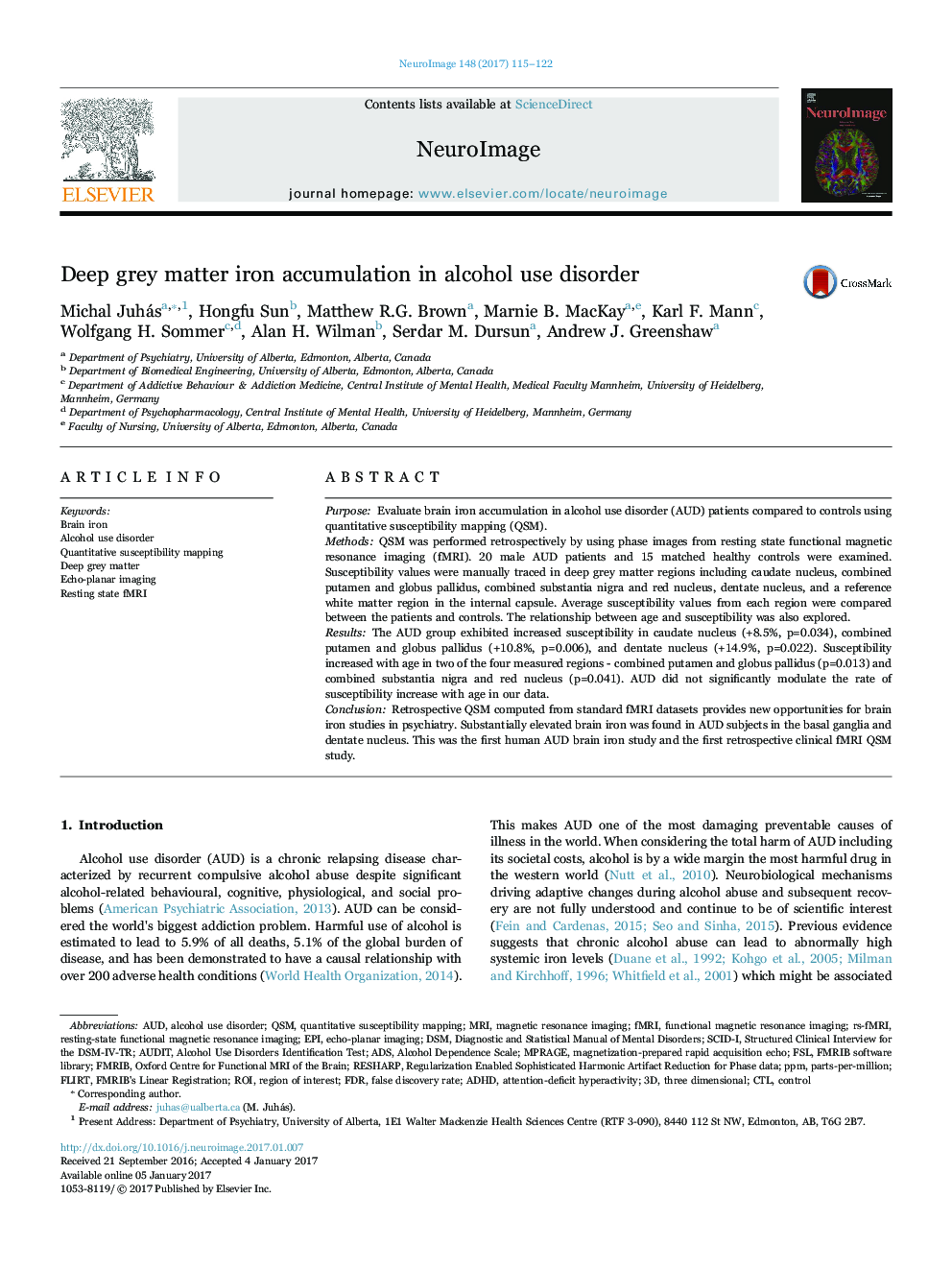| Article ID | Journal | Published Year | Pages | File Type |
|---|---|---|---|---|
| 5631281 | NeuroImage | 2017 | 8 Pages |
â¢Alcohol use disorder is associated with deep grey matter iron accumulation.â¢Brain iron accumulation increased with age in all participants.â¢EPI-QSM contrast can be used retrospectively on existing clinical fMRI datasets.
PurposeEvaluate brain iron accumulation in alcohol use disorder (AUD) patients compared to controls using quantitative susceptibility mapping (QSM).MethodsQSM was performed retrospectively by using phase images from resting state functional magnetic resonance imaging (fMRI). 20 male AUD patients and 15 matched healthy controls were examined. Susceptibility values were manually traced in deep grey matter regions including caudate nucleus, combined putamen and globus pallidus, combined substantia nigra and red nucleus, dentate nucleus, and a reference white matter region in the internal capsule. Average susceptibility values from each region were compared between the patients and controls. The relationship between age and susceptibility was also explored.ResultsThe AUD group exhibited increased susceptibility in caudate nucleus (+8.5%, p=0.034), combined putamen and globus pallidus (+10.8%, p=0.006), and dentate nucleus (+14.9%, p=0.022). Susceptibility increased with age in two of the four measured regions - combined putamen and globus pallidus (p=0.013) and combined substantia nigra and red nucleus (p=0.041). AUD did not significantly modulate the rate of susceptibility increase with age in our data.ConclusionRetrospective QSM computed from standard fMRI datasets provides new opportunities for brain iron studies in psychiatry. Substantially elevated brain iron was found in AUD subjects in the basal ganglia and dentate nucleus. This was the first human AUD brain iron study and the first retrospective clinical fMRI QSM study.
